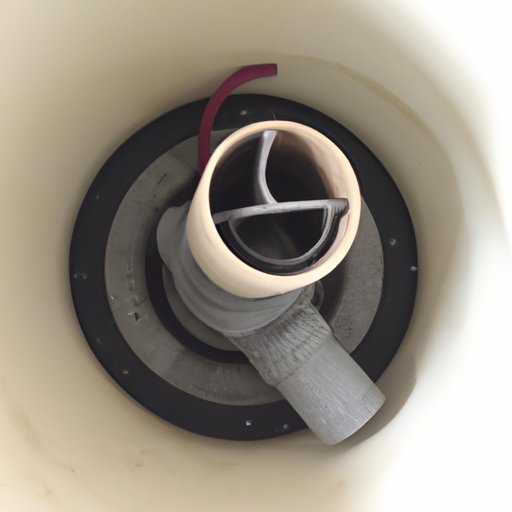Introduction
Draining a washing machine is an important part of its maintenance. This process involves removing the water from the appliance’s internal tanks, hoses, and pipes. Proper drainage helps prevent corrosion, mold growth, and other problems. If done correctly, it can also help improve the efficiency of your washing machine.
This article will provide a step-by-step guide for draining a washing machine, as well as troubleshooting tips and DIY instructions. It will also discuss the basics of draining a washing machine and the most common ways to do it.
Step-by-Step Guide for Draining a Washing Machine
Before you begin draining your washing machine, make sure it is unplugged and all hoses are disconnected. This will prevent any electrical shocks or damage to the machine.
Once the washer is unplugged, you need to place a bucket underneath the drain. This will catch the water that is released when you open the drain valve.
Next, locate the drain valve on the back of the machine. This is usually located near the bottom of the washer. Open the valve by turning it counterclockwise. This will allow the water to flow out of the machine.
Once the water has finished flowing out, empty the bucket into a sink or drain. Make sure to close the drain valve after the water has been emptied.
Troubleshooting Tips for Draining a Washing Machine
If you are having trouble draining your washing machine, there are a few things you can try. One of the most common problems is a clogged drain. To unclog a washing machine drain, use a plunger to break up the blockage. You can also try using a drain snake or chemical drain cleaner to clear the obstruction.
Another issue that can arise when draining a washing machine is a leaky hose or pipe. If this is the case, you will need to replace the damaged part. Make sure to use a high-quality replacement part to ensure the longevity of your washing machine.

DIY Guide: How to Drain a Washing Machine
If you want to learn how to drain a washing machine yourself, the first step is to review the instructions in your owner’s manual. This will explain the specific steps you need to take to properly drain your machine.
Once you have read the instructions, gather all the supplies you need. This includes a bucket, a pair of pliers, and any replacement parts if necessary. If you are going to be connecting a garden hose, make sure it is long enough to reach the nearest drain.
Finally, follow the step-by-step guide listed above. Make sure to pay attention to any safety precautions and follow all instructions carefully.

Learn the Basics of Draining a Washing Machine
In order to successfully drain a washing machine, you need to understand the parts involved. This includes the drain valve, hoses, and pipes. You also need to know what type of drain your machine uses, as some models require a different method of draining than others.
It is also important to learn the best practices for draining a washing machine. For example, you should always disconnect the power before draining and use a bucket to catch the water.

The Most Common Ways to Drain a Washing Machine
There are several different methods for draining a washing machine. The most common way is to connect a garden hose to the drain valve and run it to the nearest drain. This is the easiest and quickest method, but it does require access to a drain.
If you don’t have access to a drain, you can install a pump. This is a small device that pumps the water out of the machine and into a container. Another option is to use a siphon. This involves sucking the water out of the machine with a tube.
Conclusion
Draining a washing machine is an important part of its maintenance. This process involves removing the water from the appliance’s internal tanks, hoses, and pipes. If done correctly, it can help prevent corrosion, mold growth, and other problems.
This article provided a step-by-step guide for draining a washing machine, as well as troubleshooting tips and DIY instructions. It also discussed the basics of draining a washing machine and the most common ways to do it.


